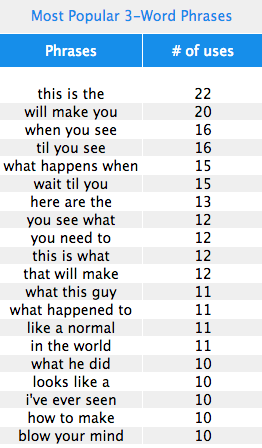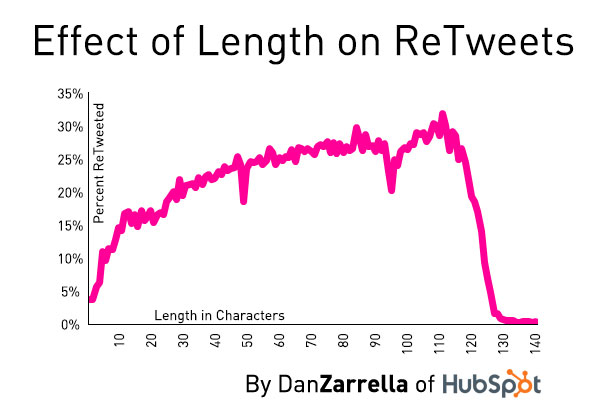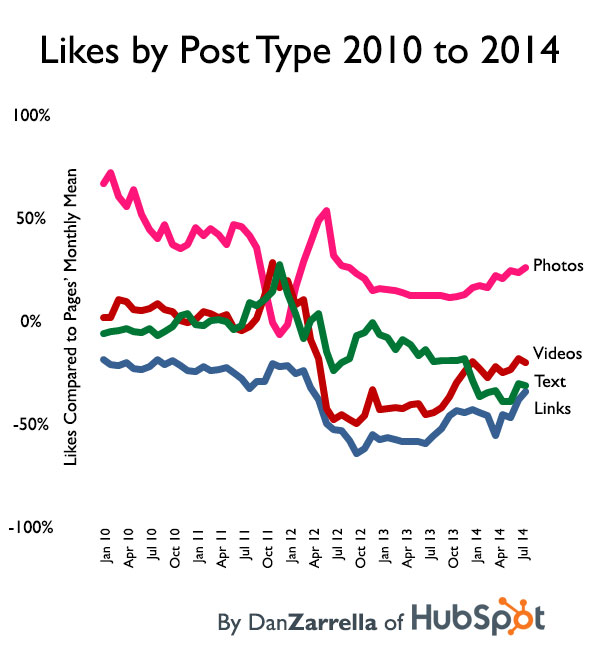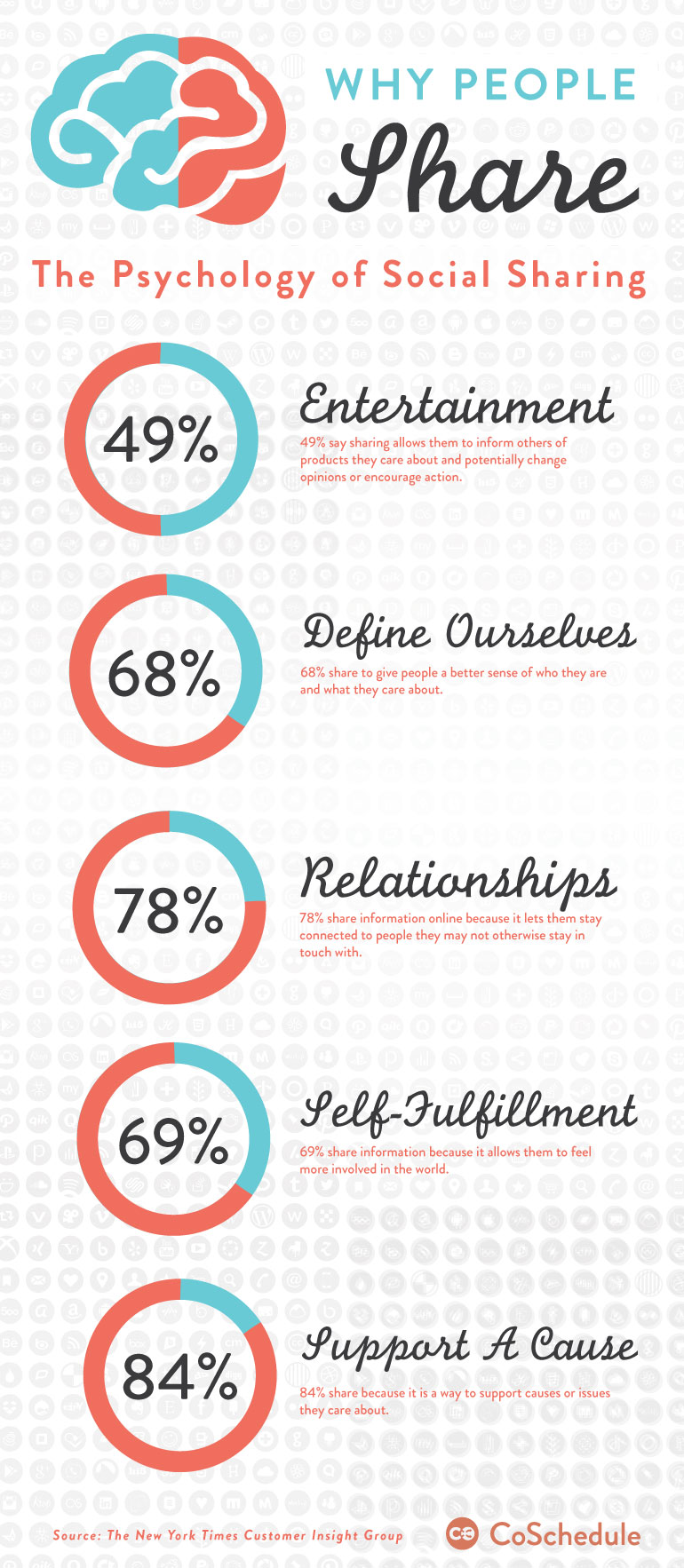 If you're wanting to increase the number of your tweets that get retweeted, you want to aim for 120 characters in your tweets. Tweets between 100-115 characters are 34% more likely to be retweeted, with a significant drop-off once you hit 120 characters.
If you're wanting to increase the number of your tweets that get retweeted, you want to aim for 120 characters in your tweets. Tweets between 100-115 characters are 34% more likely to be retweeted, with a significant drop-off once you hit 120 characters.  Going beyond just length, you want to include hashtags. Tweets with one or more hashtags are 55% more likely to be retweeted (but you should probably stick to just one hashtag.) While it makes sense that tweets with images are more likely to be retweeted, what may surprise you is the source matters. Tweets with images natively uploaded to Twitter are nearly twice as likely to be retweeted, while using Facebook or Instagram as your image source saw a decrease in retweets. What about timing? Twitter engagement for B2C brands is 17% higher on Saturday and Sunday compared to weekdays, while B2B brands should focus on weekdays, seeing 14% more engagement than weekends. Retweets are the highest around 5pm EST, but if you're looking at CTR, noon and 6pm EST are your best bets.
Going beyond just length, you want to include hashtags. Tweets with one or more hashtags are 55% more likely to be retweeted (but you should probably stick to just one hashtag.) While it makes sense that tweets with images are more likely to be retweeted, what may surprise you is the source matters. Tweets with images natively uploaded to Twitter are nearly twice as likely to be retweeted, while using Facebook or Instagram as your image source saw a decrease in retweets. What about timing? Twitter engagement for B2C brands is 17% higher on Saturday and Sunday compared to weekdays, while B2B brands should focus on weekdays, seeing 14% more engagement than weekends. Retweets are the highest around 5pm EST, but if you're looking at CTR, noon and 6pm EST are your best bets.  Our behaviour on Facebook has been found to be linked to certain emotions. So, you want your content to ring true to one of those. The main reasons people like a brand on the platform is to support it, get a coupon or discount, receive updates and participate in contests. Knowing that should help you tailor your content. But going beyond that -- we know why people share brand content.
Our behaviour on Facebook has been found to be linked to certain emotions. So, you want your content to ring true to one of those. The main reasons people like a brand on the platform is to support it, get a coupon or discount, receive updates and participate in contests. Knowing that should help you tailor your content. But going beyond that -- we know why people share brand content.  Now, that we have the data, let's use it to create better content. And don't forget we're here if you want to monitor it on a regular basis and get better insights.
Now, that we have the data, let's use it to create better content. And don't forget we're here if you want to monitor it on a regular basis and get better insights.
Nicky Yates Published on September 22, 2015 8:22 pm

